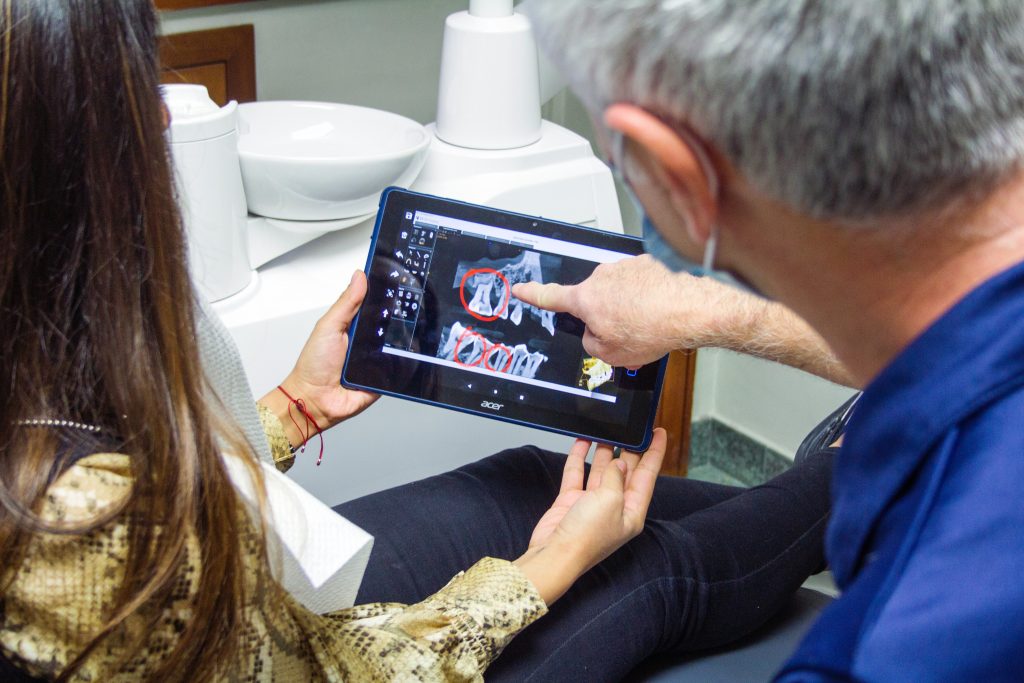Invisalign is no doubt the most popular teeth-alignment method in recent years. The technique uses a set of clear, removable aligners to reposition your teeth instead of the metal wires and brackets synonymous with traditional braces.
It requires individuals to wear the trays for at least 22 hours each day, removing them only to brush, floss, eat or drink. After every two weeks, patients replace their existing set with the next one in the series. Little by little, the teeth straighten into the desired positions as prescribed by the dentist or orthodontist.
The most frequently asked question we get from individuals looking to straighten their teeth using this method is – How much does Invisalign cost? Here’s what you need to know.
Invisalign Cost and Payment Options
Prices for these clear aligners can vary. The precise amount you can expect to pay depends on whether it is an Invisalign lite, moderate or comprehensive case. Several factors include:
- How much aligning your teeth need
- The total number of aligners required to get your teeth into the desired positions
- The total number of adjustments your dentist or orthodontist has to make
- The Invisalign cost covered by your insurance provider
If your private health insurance doesn’t cover a significant portion of the costs associated with the procedure, talk to your dentist and explore the payment options available to you. It may include monthly instalments spread over several months or any other suitable payment plan you’re comfortable with.
Invisalign Treatment Process

If this is a teeth-straightening procedure you’re thinking of doing, here’s a brief rundown of how the process works.
1. Consultation Phase
First, you’ll need to have a consultative visit with your dentist or orthodontist to determine if Invisalign is right for you. As versatile as it may be, this teeth alignment procedure may not work with all orthodontic-related issues.
Clinical considerations aside, the doctor has to assess your willingness and ability to keep the trays on for at least 22 hours a day every day for the treatment duration. Unlike traditional braces that are glued to the patient’s teeth, Invisalign trays are removable. This means that the treatment won’t work if you don’t stay the course.
2. Treatment Plan
Once you’ve ironed out the kinks around your commitment to the procedure, the associated costs, and payment options available to you, you’re now ready to proceed to the treatment plan phase.
This will involve your dentist taking photographs, X-rays, and dental impressions of your teeth. They will then send them out to Invisalign along with the dentist’s/orthodontist’s instructions detailing the direction in which they want the teeth to move.
Invisalign technicians will then embark on putting this information into their system to generate 3D models of your teeth and capture all the necessary adjustments required to align them correctly from the initial set to the final tray. This information is accessible by your dentist, who will then counter-check that the treatment course is exactly right. If they’re satisfied, Invisalign will go ahead and make the trays.
3. Wait for the Invisalign Aligner
Once the trays are manufactured, they typically take two to four weeks to arrive at your dental care office. As soon as they arrive, your dentist/orthodontist will give them to you. They’ll explain the specific order they’re supposed to be worn and the exact duration, which ranges from 10 to 14 days for each tray in the series.
You need to wear them for at least 22 hours each day and only take them out to eat and drink. Ingesting hot food or drinks could deform the plastic. Chewing gum can also pull them out of place. Your dentist will go over everything you need to know about caring for them, as well as what you can and cannot do while you have them on.
4. Teeth Refinement
Once you’ve gone through the prescribed treatment plan and have worn the final tray in the series for at least two weeks, your dentist will need to inspect the results of the procedure. There might be a tooth or two out of place that will need some additional adjustments in some cases.
Based on this, they’ll take more photographs, X-rays, and dental impressions and send them to Invisalign to order a few more trays for refinement. This is usually done at no additional cost.
5. Maintenance
Once treatment is complete, you’ll need to wear retainers to give the bones in your jaw time to solidify around the new teeth positions. Although wearing a retainer in the months following treatment is important, doctors recommend wearing it a little each week for a couple of years.
Invisalign Side Effects
While Invisalign can achieve outstanding results in as little as 12 months, some patients report experiencing some unpleasant effects while wearing the trays. Here are some of the most common ones experienced:
- Discomfort around the gums, lips, and tongue as patients get used to wearing them
- Dry mouth and bad breath since the trays prevent saliva from washing over the mouth (this is easily avoided by drinking water throughout the day)
- Slight lisp while speaking during the first few days
- Some individuals find that they bite the inside of their cheeks from time to time as they chew (this reduces as the teeth placements change over time)
Choose the Right Option for You
To sum up – How much does Invisalign cost? It largely depends on the level of complexity, the number of trays required for the entire procedure, and its time to achieve the desired result. In the end, it will all have been worth it.
Not sure if Invisalign is right for you? Get in touch with us today for a free consultation. In the meantime, check out our blog to find out if Invisalign or veneers are suitable for you.

